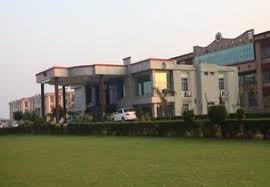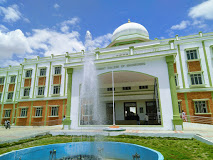
The North East Rural Livelihood Project (NERLP)has empowered rural poor and improved livelihoods of about 300,000 rural households in 1,645 villages under 58 development blocks across the eleven districts of four statesof Mizoram, Nagaland, Tripura and Sikkim, Under this project, the Skills development and placement has trained 10462 boys and girls in various job skills and a total of 5494 of them are employed.
Daily Current Affairs Quiz 2019
NERLP is World Bank aided, multi-state livelihood Rs.683 crore (USD 144.4 million) project under the Ministry of Development of North Eastern Region (DoNER), launched in 2012. The project has been implemented in 11 districts of Mizoram, Nagaland, Tripura and Sikkim.The project aims “to improve rural livelihoods especially that of women, unemployed youth and the most disadvantaged, in four North Eastern States”.The project also works in partnerships with expert organizations to focus on cluster development through value chains.
The project has focussed on five development strategies, namely, social empowerment, economic empowerment, partnership development, project management and livelihood & value chain developments.
The project impacted the lives of about 18,00,000 (18 lakh) population, with creation of common economic assets worth around total Rs. 136 Crores. Theseincludecommunity projects executed by 1114 Community Development Groups (CDGs) with total outlay of Rs. 105 Crores and 176rural infrastructure projects under the Model Livelihood Cluster and Value Chain Development with a total investment of Rs.31 Crores.
Community Development Group (CDG) formed per village comprising of three members of every family with the major role to develop Community Development Plan (CDP) with project funding of up to Rs.10 Lakhs. The activities under CDP include reclamation of wasteland, construction of check-dams, plantation, horticulture projects, provision of village electrification through hydrogen, provision of solar lighting, Spring water harvest to mitigating water needs for homestead farming, animal rearing, health and sanitation. The CDPs are impacting the villages in big ways since village communities – members of the CDGs- have selected what is most pertinent for their own progress and development.
Rural infrastructure projects include 49 Commodities Collection Centres,51 Roadside Marketing Shed , 15 Prime Location Marketing Sheds, 63 Processing Units (including Bamboo Round Stick Units (4), Spices Processing Units (2), Rice Sheller Stations (5), Pig And Fish Feed Mills(3), Modern Pig Breeding Units (15), Fish Hatcheries(2), Scientific Slaughter House(1), Poultry Hatcheries (2), Agriculture Seed Processing Units(2), Ginger Processing Units (4), King Chili Processing Unit (1), Large Cardamoms Processing Plant (1), Vegetable Pack Houses(4), Green Tea Processing Plants (2), Fruit Processing Units(4), CLBRCs (2), Tailoring Units (3), Training Centres (2) and Yarn Banks(4) for weavers within the weaving clusters.
Across the project districts, livelihood activities pursued by Self Help Group (SHG) members have increased considerably, thus increasing family incomes. Women have become more knowledgeable and expressive and they display better leadership qualities. The NERLP intervention has brought many positive changes. One SHG leader has become a Cabinet Minister in the state legislature in Tripura, and many SHG leaders arepanchayat leaders today. Communities are emerging active and vibrant through enthusiastic participation in the process of development and assuming ownership.





